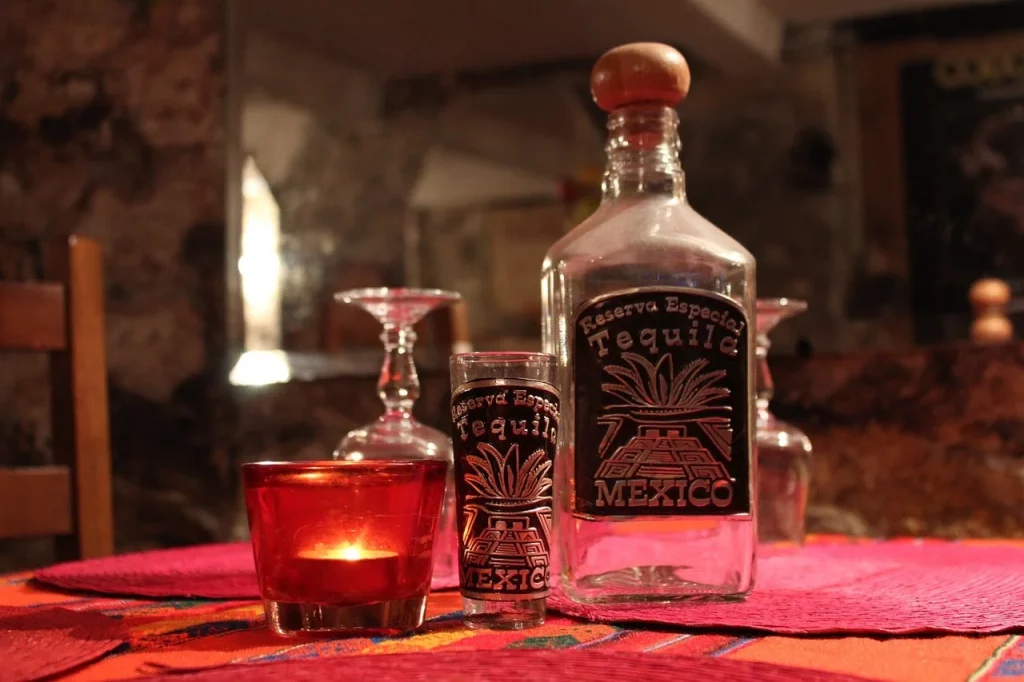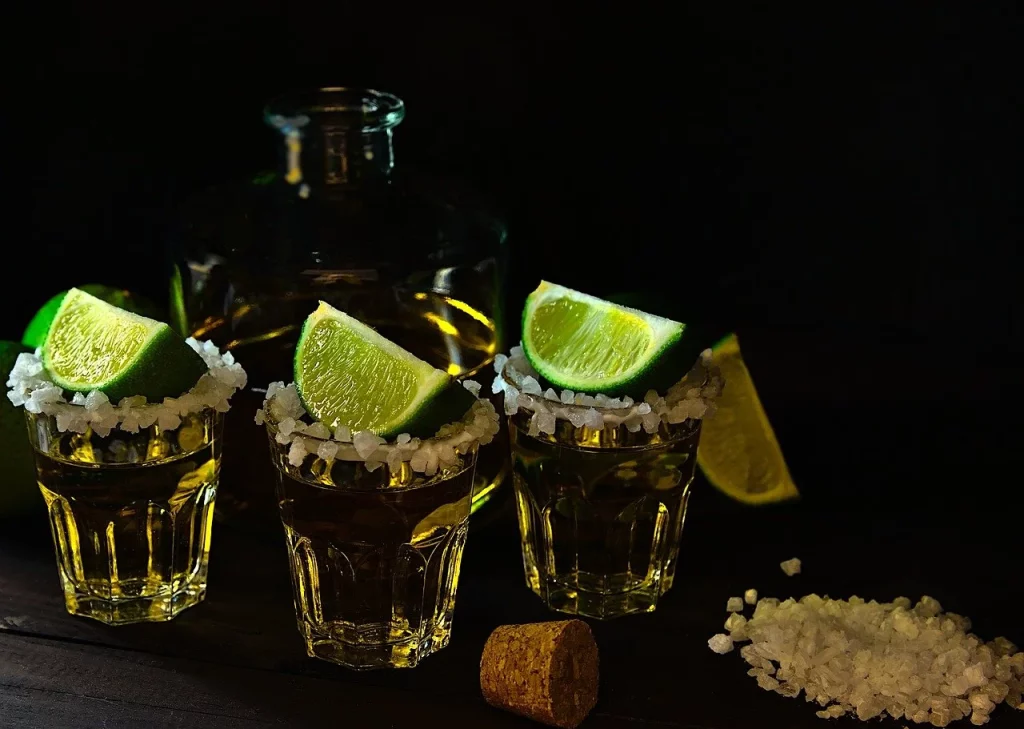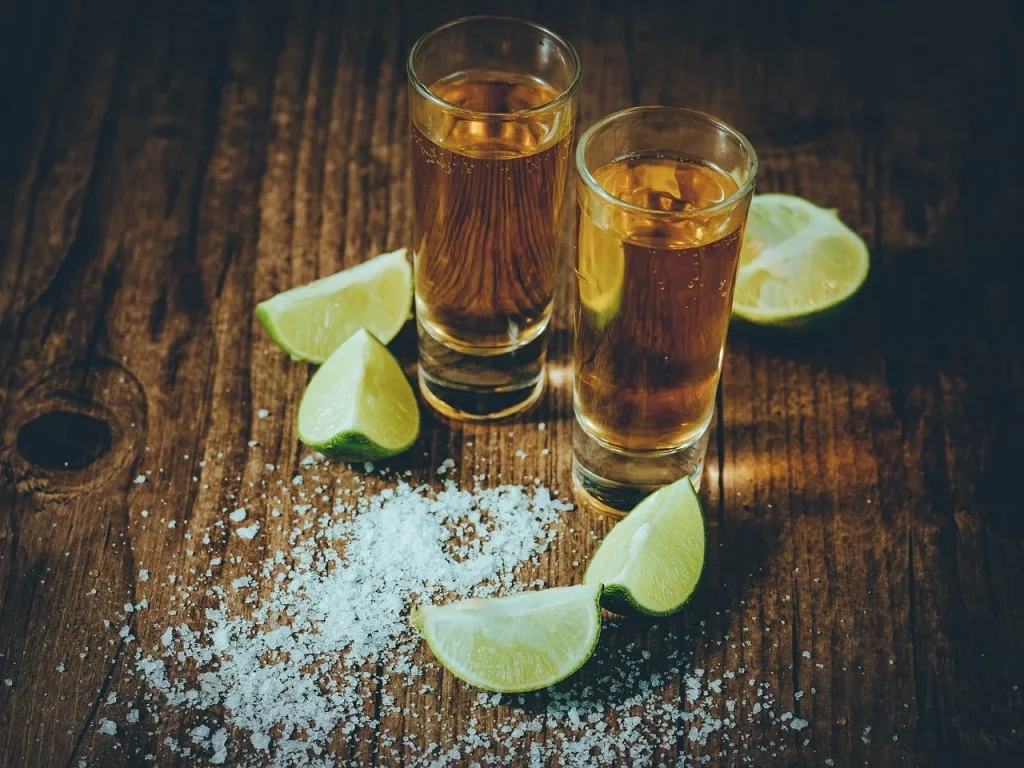Grab your lime and salt; it’s time to dive deep into the world of tequila! This isn’t just any spirit; it’s a story in a bottle, each sip bursting with history, tradition, and a little bit of magic.
In our quest to bring you some fun facts about tequila, we’ll explore its origins, the ancient craft of tequila-making, and how it evolved to become the life of the party. From clear to golden, smooth to smoky, tequila wears many hats.
And just when you thought it couldn’t get any better, did you know there’s such a thing as a tequila sommelier? Let’s explore more magic facts.
I like to drink tequila to remind myself that I’m not a lizard.
Hunter S. Thompson
Tequila Facts
Let’s see some facts together. Don’t forget to read carefully because I created a quiz for you at the end of this page to test if you are a tequila expert. Don’t disappoint me.
- Agave plants, from which it is distilled, take about 8 to 12 years to mature.
- It has a designation of origin, meaning it can only be produced in specific regions of Mexico.
- The first recorded distillation occurred in the 16th century in the territory of present-day Jalisco.
- Only blue agave (Agave tequilana) is used for authentic production.
- The “piñas”, or hearts, of the agave plant can weigh over 100 pounds.
- A special type of yeast is used for fermentation, often a closely guarded secret of the distillery.
- There are more than 200 varieties of agave, but only blue agave is used for creating this spirit.
- The term itself was not officially used until the 19th century.
- Some bottles contain a worm, which is actually a marketing gimmick rather than a tradition.
- Mexico granted it a protected designation of origin status in more than 40 countries.
- The highest price ever paid for a bottle was $225,000 in 2006, designed by Fernando Altamirano.
- Its production process was declared part of the Intangible Cultural Heritage of Humanity by UNESCO in 2006.
- A mature agave plant contains a sweet nectar called aguamiel, considered the “blood” of the agave.

- Drinking it straight is the preferred way in Mexico, often accompanied by sangrita, a sweet, sour, and spicy drink.
- The first export of the spirit to the United States was in the late 19th century.
- Mixto labels indicate that it is not 100% agave, containing up to 49% of other sugars.
- Aging in oak barrels is crucial for creating reposado, añejo, and extra añejo varieties.
- The town of Tequila, Jalisco, is considered the birthplace of the spirit.
- Its popularity in the United States spiked after the 1917 ban on European alcohols during World War I.
- Margarita, one of the most famous cocktails, traditionally consists of lime juice, Cointreau, and spirit.
- The volcanic soil in the Jalisco region is ideal for growing the blue agave plant.
- The spirit’s clarity does not indicate quality; color is influenced by aging or added caramel for mixtos.
- Agave harvesting is done by hand, using a tool called a coa.
- Each region of Mexico produces a version with its own unique taste profile.
- A common myth is that it is a hallucinogenic, but that’s not true; that confusion likely arises from mezcal, which is a similar spirit.
- Some bottles feature a rope around the neck, a nod to the traditional method of sealing bottles.
- The industry is among Mexico’s most regulated, with strict standards enforced by the Consejo Regulador del Tequila (CRT).
- A single agave plant can produce up to 5 liters of spirit.

- There’s a Tequila Express train that takes visitors on tours of distilleries in Jalisco.
- It was once believed to have medicinal properties and was used as a remedy for various ailments.
- Climate change poses a significant threat to agave cultivation with rising temperatures and changing rainfall patterns.
- Harvesters, known as jimadores, use generations of knowledge to identify when agave plants are ready for harvest.
- It can only be bottled within the designated regions of Mexico to be considered authentic.
- A special type of clay pot still, used by some artisanal producers, imparts a distinctive flavor.
- The spirit’s smoothness increases with age, but so does the price.
- Agave fields are often pollinated by bats, which helps to maintain the ecosystem’s balance.
- Some ultra-premium versions are aged in barrels previously used for other spirits, such as whiskey or cognac, to add complexity.
- There’s a national day dedicated to celebrating it in Mexico and the United States.

- The fermentation process can last from a few days to several weeks, influencing the final flavor.
- Legend says that a lightning bolt struck an agave plant, cooking it and releasing its sweet nectar, leading to the discovery of the distillation process.
- Environmental sustainability efforts are increasing within the industry, with initiatives to reuse agave waste and conserve water.
- The growth of the premium market segment reflects consumers’ increasing preference for quality over quantity.
- It’s considered a maguey spirit, a term referring to the family of agaves used in its production.
- Unlike most spirits, drinking it is often associated with a ritual involving salt and lime.
- Artisanal and small-batch producers are gaining popularity for their handcrafted, unique varieties.
- Historically, agave was also used by indigenous peoples to make fiber and building materials.
- A proper tasting involves sipping slowly to appreciate the complex flavors rather than shooting them.
- Agave syrup, a sweetener, is a byproduct of the agave used in its production.
- The spirit is celebrated in art, music, and festivals, highlighting its cultural importance in Mexico.
- Increased global demand has led to the exploration of sustainable farming practices to protect the future of agave cultivation.
Tequila Myths

Let’s continue our journey with some common myths. It’s time to uncover the actual truth and set the record straight.
- The myth is that tequila can instantly cure a cold
While it is often touted for its “medicinal” properties, it’s not a cure for the common cold. A warm tequila concoction might provide temporary relief from symptoms, but the actual healing is done by the body’s immune system over time. - Tequila worms enhance the flavor
In reality, the presence of a worm (which is actually a larva from the agave plant) is not traditionally found in tequila but rather in some types of mezcal. This addition is more of a marketing gimmick than a flavor enhancer. - Only shots are the proper way to enjoy tequila
Contrary to popular belief, it can be savored in many forms beyond just shots. It is enjoyed in cocktails and sipped neat, especially high-quality, aged tequilas, which are meant to be appreciated slowly for their complex flavors. - Tequila causes worse hangovers than other spirits
The truth is, hangovers are caused by excessive alcohol consumption, regardless of the type. Quality tequila, made from 100% agave, is actually less likely to cause severe hangovers compared to mixtos, which contain sugars and other alcohols. - All tequilas taste the same
Far from it, they vary greatly in taste based on the aging process, the region of the agave plants, and the production methods. From the crisp, clear flavors of Blanco to the rich, complex notes of Añejo, there is a wide range of profiles to explore.
No products found.
Tequila Quotes

Below, you will find some of my favorite quotes about tequila. Feel free to share yours in the comments so I can add them to the list as well.
Tequila is not even a drink; it’s a way for having the cops around without using a phone.
Dylan Moran
Dylan Moran comically suggests that drinking tequila can lead to situations wild enough to warrant police attention, without actually needing to call them.
Tequila is to wake the living and wake the dead.
Guillermo del Toro
Guillermo del Toro encapsulates the spirit of tequila as a beverage that energizes and invigorates, evoking a powerful life force that can stir both the living and the mythical dead.
One tequila, two tequila, three tequila, floor.
George Carlin
George Carlin, with his characteristic wit, breaks down the immediate and potent effects of tequila consumption, humorously suggesting that it doesn’t take much before one finds themselves unable to stand.
Tequila does not make you fat; it makes you lean…against tables, chairs, floors, walls, and ugly people.
Tommy Lee
Tommy Lee playfully asserts that while tequila might not contribute to weight gain, it certainly affects one’s balance and judgment, leading to humorous and sometimes undesirable support-seeking behavior.
Taking shots of tequila is more about the journey than the destination.
Ryan Reynolds
Ryan Reynolds reflects on the experience of drinking tequila shots not just for the sake of intoxication but as an adventure in itself, highlighting the process over the outcome.
Tequila FAQ

The path through the quotes leads us here to the FAQs, the final milestone before the trivia. Read these answers carefully, as they are going to help you in the upcoming quiz.
- Can tequila go bad?
Absolutely, but it takes a while. An unopened bottle is like a time capsule—it can last for years. However, once you’ve broken that seal, the clock starts ticking. You’ve got a few months to a couple of years to enjoy its best quality, depending on how you store it. Keep it cool and away from sunlight, and your tequila will be a faithful companion for quite some time. - Which tequila for margarita?
Ah, the eternal debate! For a classic margarita, you can’t go wrong with a good blanco (or silver) tequila. It’s unaged, fresh, and has a clean, crisp taste that sings in a margarita. If you’re feeling adventurous, Reposado tequila, which is aged for a short period, can add a warm, complex flavor to your cocktail. - Can tequila freeze?
Given its high alcohol content, it has a much lower freezing point than water. So, unless you’re storing it in a commercial freezer or in the heart of Antarctica, your tequila is more likely to stay in liquid form, ready for your next toast. - Can tequila be made outside of Mexico?
Tequila is a denomination of origin product, which means it can only be produced in certain regions of Mexico—primarily Jalisco and some areas in Guanajuato, Michoacán, Nayarit, and Tamaulipas. Spirits made outside these regions from the blue agave plant cannot legally be called tequila. - What’s the difference between tequila and mezcal?
Both spirits hail from the agave plant, but not all agaves are created equal. Tequila is made exclusively from blue agave, while mezcal can be made from over 30 types of agave. The production process also differs: mezcal is traditionally smoked, giving it a distinctive, earthy flavor.
No products found.
Tequila Trivia

Welcome to tequila trivia! Remember, if you don’t nail at least one question, you might find yourself waking up in a sombrero with no idea how it got there.
Conclusion
In closing, tequila has proven itself to be a spirit of many layers. It’s a celebration of culture, a craft refined through generations, and a versatile companion to any mixer. We’ve uncovered the roots of its heritage and glimpsed into the artisanal processes that make it stand out in the world of spirits.
Whether it’s the smoothness of a blanco or the rich complexity of an añejo, it brings people together in moments of joy and celebration. So, here’s to tequila, a drink that dances on the palate and warms the heart. Till next time, stay curious and explore more. Cheers.
3 Sources Used For This ArticleBest Tequila Quotes – Liquor Laboratory
Fun Facts About Tequila – I Fun Facts


